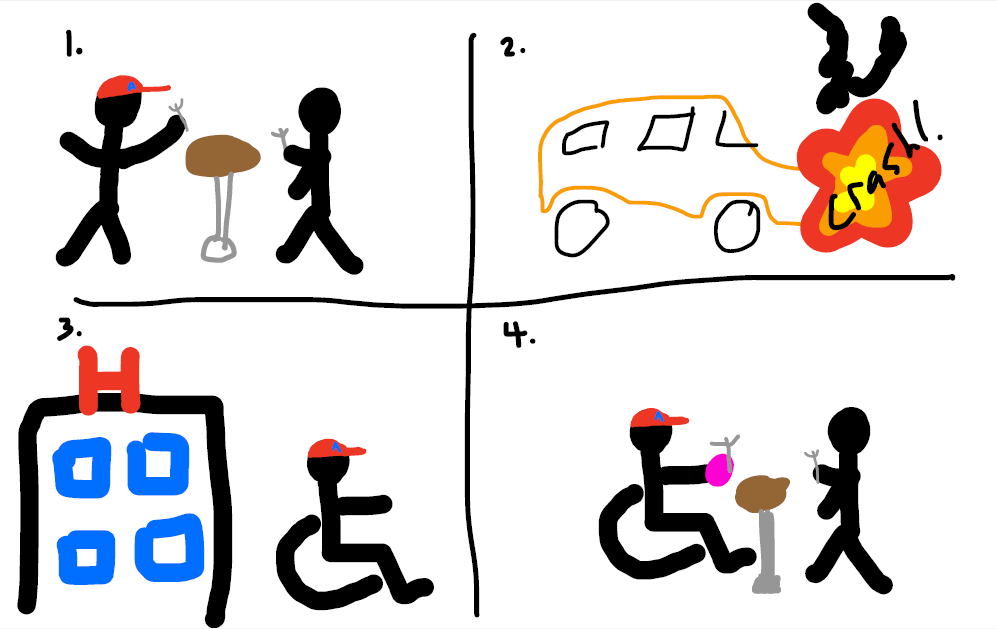In the United States today, there are an estimated 30 million people living with some type of disability. While some assistive living devices, like wheelchairs and walkers, have a large market presence, traditional manufacturing methods have prevented devices for simple activities of daily living (such as writing, getting dressed, etc.) from being produced. From a manufacturer’s perspective, the small market for these types of products cannot justify the large upfront costs needed to make the product. Unfortunately, this still leaves a large number of people who must try to devise some type of solution for their problem using things like duct-tape, which ultimately lacks the reliability, safety, and effectiveness of engineered products.

1. An individual is able use a fork normally.
2. The individual is involved in an accident.
3. Following the accident, the individual is handicapped and unable to use a fork as they once were.
4. The individual is able to 3D-print a device that enables them to use a fork again!
However, recent advances in additive manufacturing (colloquially referred to as “3D printing”) may finally create an avenue for this problem to be solved. 3D printing is a manufacturing method that takes digital files and turns them into actual real-life objects. This is done by digitally slicing up the computer model and using that information to lay down material one cross-sectional layer at a time from the bottom up. This allows for the creation of any type geometry, and it eliminates the need for costly upfront investment in tooling, making it more efficient for low-volume production. It has also become more accessible for everyday consumers, with the cost of 3D printers dramatically decreasing and 3D printers showing up in public libraries across the country (even in our very own Burton Barr Central Library in downtown Phoenix and in the Main Library on the U of A campus in Tucson!).
To take advantage of these advancements in 3D printing, my mentor, Dr. Jonathan Lifshitz, and I are in the process of creating an online library of 3D-printable medical assistive devices. The library will be comprised of CAD files for assistive devices to help with all types of disabilities. The users will find a device they like in the library, download it for free, and then print it at their convenience. To provide users with accurate search results, they will be able to incorporate unique search modifiers such as disability type, body part, daily activity, etc., to narrow the results down to what interests them. Users will also be able to provide feedback to help make the devices better and inspire the creation of new devices for the library as well. It will be like the Google Play store or iTunes of 3D-printable assistive medical devices!
The reason I became interested in this project is primarily because of my experiences as a biomedical engineer in college. I had the opportunity to work with medical devices and learn about some of the new technologies coming into the market. With a scholarly project like this, I am able to create something in the medical field that helps people while still using all the skills and experience I gained in engineering school. This integration of new technology and patient care is a perfect example of what I want to accomplish someday in the field of medicine.
Andrew Kantzos is currently a MS2 student here are UACOM-PHX. He has a Bachelor’s degree in biomedical engineering and a Certificate in Design from Northwestern University, and went to high school locally at Basha High in Chandler, AZ.


